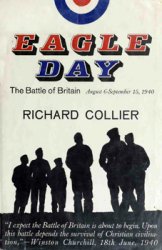While the United States was a world leader in patenting inventions, developing new technologies, and utilizing scientific discoveries in industrial processes, it was not on the cutting edge of the advance of science itself in the late 19th century. The frontiers of science were advanced primarily in Germany, Britain, and France. Nevertheless, individual American scientists made significant contributions in geology, paleontology, chemistry, physics, and astronomy.
The sciences of geology and paleontology were encouraged by the federally funded U. S. Geological Survey as well as by state-supported geological surveys. Lawmakers generally intended the geological surveys to identify deposits of minerals of practical value to industry and society, but some geologists were more interested in researching the science of geology as distinct from economic geology. The first director of the U. S. Geological Survey, Clarence (Rivers) King, was an advocate of economic geology, while his successor John Wesley Powell pushed basic research. Those interested in research on both the state and national level made important discoveries.
Thomas C. Chamberlin (1843-1928), who initially became interested in glaciation research during his work with the Wisconsin Geological Survey, was appointed by Powell to head the glacial division of the U. S. Geological
Survey. Chamberlin moved on to become president of the University of Wisconsin and later headed the Geology Department of the then-new University of Chicago, but he remained the outstanding authority on glaciers. That expertise on cold climates in the distant past led him to question the widespread idea that the earth had been a molten mass that was gradually cooling. With a University of Chicago astronomer and mathematician, Forest R. Moulton, he posited a new “planetesimal” hypothesis that the earth coalesced from small particles in orbit about the sun and had a much cooler climate, which would account for evidence of early glaciation.
Othniel Charles Marsh in 1866 became America’s first professor of paleontology at Yale University. In 1882 Powell appointed Marsh the U. S. Geological Survey’s first vertebrate paleontologist, and while serving in that capacity he amassed a huge collection of almost 500 species. Marsh was an expert in constructing the skeletons of extinct animals, and he identified 80 forms of dinosaurs. His work gave significant support to Charles Darwin’s hypothesis of evolution by discovering birds with teeth and especially by finding a sequence of American fossil horses. Marsh’s arch enemy, Edward Drinker Cope, with whom he engaged in an unseemly feud over who found what first, was also a paleontologist of note who described many new species and did important work on reptiles and fish. Cope, however, was hasty in his work, abrasive in his personal relations, and received no help from the Geological Survey after Marsh became its chief paleontologist.
The greatest American scientist of the Gilded Age was Josiah Willard Gibbs, whose theoretical papers fundamentally influenced chemistry, physics, and mathematics. His most renowned publication was “On the Equilibrium of Heterogeneous Substances,” which provided a theoretical basis for all possible chemical reactions and the mathematics to calculate the energy expended and the heat gained or lost. In that paper he reformulated the second law of thermodynamics and essentially established the discipline of physical chemistry. Mathematics was at the core of much of Gibbs’s work. His notes on mathematical representation were published as Vector Analysis, which he preferred to think of as “multiple algebra.” He was interested in the speed of light, electricity, and magnetism, and he believed that light was electromagnetic. Another chemist of note, Ira Remsen (1846-1927), suggested the experiments that developed saccharin and headed the graduate program in chemistry at Johns Hopkins University.
Americans excelled in astronomy. Maria Mitchell had discovered a comet in 1847 and in the Gilded Age was professor of astronomy at Vassar College. In 1882 Henry Draper (1837-82) photographed the Orion Nebula, and in 1891 astrophysicist George Ellery Hale (1868-1938) used his spectroheliograph to photograph the sun’s prominences (clouds of gas high above the sun’s surface). The aviation pioneer Samuel P. Langley (1834-1906) was also an astrophysicist, who in 1878 invented the bolometer to detect temperature differences on the sun. The bolometer was an electric thermometer so sensitive that it could measure variations in temperature of up to one-millionth of a degree. Asaph Hall at the U. S. Naval Observatory in Washington discovered in 1873 the two moons of Mars, and in the early 1890s James E. Keeler (1857-1900) discovered that Saturn’s rings were not solid but rather were composed of small particles, with each ring having its own orbit about the planet.
During the Gilded Age, the day of the gifted amateur—the dilettante—scientist was passing, and the university with its faculty was becoming the center of research. In 1870 only Harvard and Yale could claim to be institutions of research as well as of teaching. They were joined by Johns Hopkins, which from its founding in 1876 became a center of research. By 1900, however, state and other private universities were building significant libraries and laboratories, promoting research, and laying the foundation for the enormous contributions of America to science in the 20th century.
Further reading: Robert V. Bruce, The Launching of Modern American Science, 1846-1876 (Ithaca, N. Y.: Cornell University Press, 1988); A. Hunter Dupree, ed., Science and the Emergence of Modern America, 1865-1916 (Chicago: Rand McNally, 1963); A. Hunter Dupree, Science in the Federal Government: A History of Policies and Activities (Baltimore, Md.: Johns Hopkins University Press, 1986).
Scott, Thomas Alexander (1823-1881) railway executive
Thomas Alexander Scott was born on December 28, 1823, at Fort Loudon, Pennsylvania. He went to work at the age of 11 and held a variety of clerkships until 1850, when he became station agent for the Pennsylvania Railroad (PRR), at Duncansville, Pennsylvania. Able, energetic, handsome, and gregarious, Scott advanced rapidly in that organization. In 1852 he became the superintendent of the PRR’s division west of Altoona (hiring Andrew Carnegie as his personal telegrapher and secretary), in 1858 its general superintendent, and in 1860 its first vice president. With the outbreak of the Civil War (the first railroad war) in 1861 the War Department called Scott to Washington to organize the transportation of men and munitions from northern cities to the front lines; in August he was appointed assistant secretary of war. Scott resigned in June 1862 but returned to the War Department in September 1863. The administration of railroads by Scott and others rapidly moved troops and enabled the North to overcome the South’s advantage of shorter distances (interior lines) between fronts.
After the war Scott continued his meteoric rise in the PRR and branched out. In 1871 he was named president of the Pennsylvania company that operated the PRR system west of Pittsburgh and in 1874 became president of the PRR. Scott, however, was a man of grandiose visions whose interests included more than the PRR. In 1871 he obtained controlling interest in the Union Pacific (which he sold to Vanderbilt interests in 1872) and in 1872 in the Texas & Pacific (T&P), which he wished to build into a transcontinental road. The panic of 1873 and the ensuing depression frustrated Scott’s dreams for the T&P. He lobbied Congress assiduously, but unsuccessfully, for a land grant for the T&P. Apparently, his lobby also worked during the 1877 electoral college count for the selection of Ruthereord B. Hayes (on the dubious assumption that Hayes would be more likely to approve a land grant than Samuel J. Tilden), but Scott’s lobbyists had no appreciable effect on the outcome, and Hayes did not support a land grant. Hayes disappointed Scott further during the Great Strike oe 1877, which Scott—in collusion with other railroad presidents—precipitated with carefully coordinated wage cuts. Hayes refused to call up volunteers to suppress the strike as Scott demanded and used the army sparingly to keep the peace. Although Scott managed the PRR conservatively, his bold, risky efforts to create a transcontinental system during an economic downturn failed and took a toll on his health. In 1880 he resigned as president of the PRR and sold the T&P to Jay Gould in 1881. Shortly thereafter, Scott died at Darby, Pennsylvania, on May 21, 1881.
Further reading: Edwin P. Alexander, On the Main Line: The Pennsylvania Railroad in the 19th Century (New York: C. N. Potter, 1971), George H. Burgess, and Miles C. Kennedy, Centennial History of the Pennsylvania Railroad Company, 1846-1946 (New York: Arno, 1976).




 World History
World History









